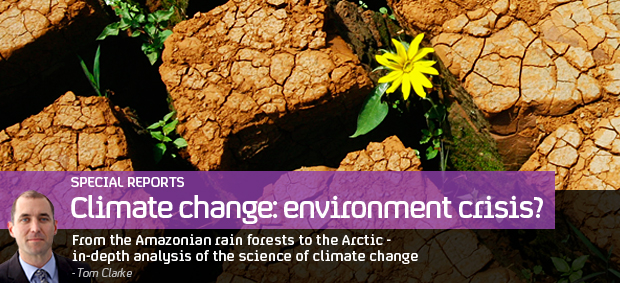How our pension savings are making the world go hungry
As world food prices continue to rise, Andrew Hogg, of Christian Aid, says the investments of ordinary pension funds in commodities markets are making the problem worse.

Earlier this year, a UK government-backed report, The Future of Food and Farming: Challenges and Choices for Global Sustainability, issued a stark warning.
Compiled by Professor Sir John Beddington, Chief Scientific Adviser to the UK Government and head of the Government Office for Science, it was distilled from the work of some 400 scientists in 35 countries, who had looked at the future and been alarmed at what they saw.
“There is urgency in taking what may be very difficult policy decisions today relating to the diverse challenges facing the global food system, and also to address the present levels of hunger – 925 million – and perhaps a further billion lack[ing] sufficient micronutrients,” said the report.
“It is imperative that the need for rapid action is realised by all concerned.”
Since it was published, matters have worsened. By February, food prices stood 23 points above the record levels reached during June 2008. Although they fell back slightly in April, cereal prices – of crucial importance to the world’s poor – remained at an all-time high.
The UN’s Food and Agriculture Organization…talks of a billion people living in chronic hunger.
The UN’s Food and Agriculture Organization website now talks of a billion people living in “chronic hunger”.
While the causes of hunger are myriad – some of them natural, such as cyclones and tsunamis and some unnatural, such as war and errant economic policies – suspicions are hardening that a new factor is now at work, pushing the price of food beyond the pockets of the poor.
That factor is the huge amount of money that has poured into the commodities markets in recent years, to which rising food prices now appear to be responding.

In a new report – Hungry for Justice, Fighting Starvation in an Age of Plenty – Christian Aid says that in what will come as a surprise to many, it is not the hedge funds that are leading this investment.
There have been some well-publicised cases in which they have tried to corner the market in a commodity but that is not the issue here.
More pertinent are the activities of institutional investors such as pension funds looking for a safe place in which to let their money grow following the bursting of the dot.com bubble, and more latterly, the collapse of the property boom.
The scene was set for their entry into the commodities market in 1991 when Goldman Sachs created an index of 18 commodities, including various foods, in which people were invited to invest.
As well as providing diversity in the form of different types of commodities, from oil to metals to foodstuffs, that would perform differently, the index would also offer diversity at a broader level to those with investments in traditional assets such as shares and bonds.
Business built up quickly, only to turn into an avalanche once the Commodity Futures Modernization Act was passed in the US in 2000. That allowed banks, broker-dealers and other financial institutions to develop, market and trade a variety of unregulated financial products.
Crucially, it also allowed more heavily regulated investors to enter the commodities market. Pension funds, for instance, are forbidden in the US from speculating on commodities futures themselves because that involves leverage, or the use of borrowed money. However, the Act gave them access to the index funds.
And they have money – lots of it. An illustration of the kind of funds at their disposal is the fact that the combined value of the world’s 13 largest pension markets is around $US26.5trn, higher than the combined GDP of China and the US.
The bets they make on commodity indices, however, have a knock-on effect. For while they are not allowed to invest in commodities futures directly, every index-linked investment they make tends to produce a related investment in the “futures” of the individual commodities on the index by whichever bank or finance house is managing their business.
The index-fund managers make such bets to cover themselves in terms of prices moving up and down. And they too, particularly with extra money flooding into the system through quantitative easing, have a lot of money to invest.
It is these underlying trades in the commodities futures that are now thought to be distorting prices. This is because the money is invested with relatively little heed to fundamental factors such as consumer demand and whether harvests have been good or bad.
“Price discovery”, as the process is known by which the market sets the real price of a commodity through assessing such factors, has been eclipsed, so the argument goes, by the huge amounts of money sloshing around in the system.
As a result, the signals that producers receive about whether to up production, or reduce it, are unclear. In the short term (most of the last ten years) the prices of major foodstuffs have been driven unnecessarily high, with knock-on effects for world hunger. In the longer term, we are at risk of locking in inefficiencies that will prevent the planet from providing for its growing population.
Research into the links between food price rises and commodity investment is at a nascent stage. Policy makers, however, must investigate as a matter of urgency the way in which the former now mirrors the latter.
-
Latest news
-
As India goes to the polls in the world’s largest election – what do British-Indians think?6m

-
Tees Valley: Meet the candidates in one of the biggest contests coming up in May’s local elections4m

-
Keir Starmer says public sector reform will be a struggle7m

-
Nicola Sturgeon’s husband Peter Murrell charged with embezzlement of funds from SNP1m

-
Ukraine might finally get $60billion in American weapons and assistance to defend against Russia3m

-





